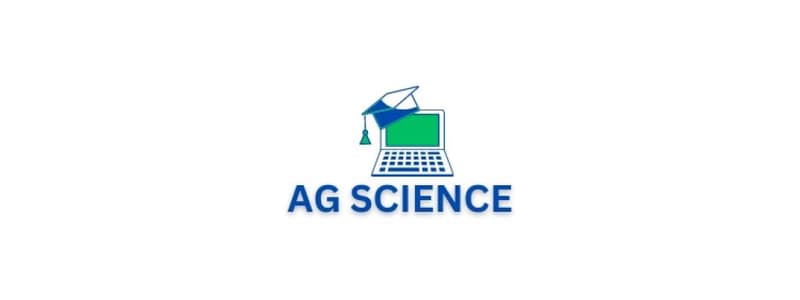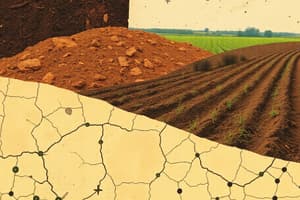Podcast
Questions and Answers
Wheat is the most popular crop in Ireland.
Wheat is the most popular crop in Ireland.
False (B)
Wheat requires acidic soil with a pH range of 4.5 - 6.5 for optimal growth.
Wheat requires acidic soil with a pH range of 4.5 - 6.5 for optimal growth.
False (B)
Winter wheat is sown in Ireland in April - May.
Winter wheat is sown in Ireland in April - May.
False (B)
Potassium has a maximum rate under the Nitrates directive when sowing wheat.
Potassium has a maximum rate under the Nitrates directive when sowing wheat.
Leaf rust is a bacterial disease that affects wheat crops.
Leaf rust is a bacterial disease that affects wheat crops.
Barely dwarf virus BYDV is transmitted by beetles.
Barely dwarf virus BYDV is transmitted by beetles.
Wireworms are crane fly larvae that feed on wheat crops.
Wireworms are crane fly larvae that feed on wheat crops.
Wheat is the most popular crop in Ireland.
Wheat is the most popular crop in Ireland.
Leaf Blotch is a bacterial disease that affects wheat crops.
Leaf Blotch is a bacterial disease that affects wheat crops.
Winter wheat in Ireland is sown from September to November.
Winter wheat in Ireland is sown from September to November.
Wheat can tolerate a pH range of 5.5 - 7 in the soil.
Wheat can tolerate a pH range of 5.5 - 7 in the soil.
Wireworms are crane fly larvae that hatch and feed on wheat crops.
Wireworms are crane fly larvae that hatch and feed on wheat crops.
Powdery mildew is a fungal disease that causes the underside of wheat leaves to turn yellow.
Powdery mildew is a fungal disease that causes the underside of wheat leaves to turn yellow.
Potassium has a maximum rate under the Nitrates directive when sowing wheat.
Potassium has a maximum rate under the Nitrates directive when sowing wheat.
Flashcards are hidden until you start studying



